Fall Lawn Care Checklist for South Carolina
BY MELANIE JOSEPH | MAY 25TH, 2023 | LAWN CARE, SOUTH CAROLINAAs the crisp autumn air settles in, South Carolina homeowners are preparing for a season of pumpkin patches, football games, and cozy nights by the fire. But amidst the fall festivities, it’s easy to neglect the TLC your lawn needs to thrive.
Proper fall lawn care is not only crucial for maintaining a beautiful yard, but it also sets the foundation for healthy growth come springtime. With that in mind, let this comprehensive fall lawn care checklist for South Carolina guide you. From fertilization to aeration, following these steps will ensure a lush, healthy lawn year-round.
In this article, we’ll cover:
- Perform Fall Yard Cleanup
- Test the Soil
- Aerate Your Lawn
- Cut Back on Watering
- Mow Your Lawn Short
- Apply Soil Amendments
- Control and Prevent Weeds
- Treat Lawn Diseases
- Apply Fertilizer
- Winterize Cold-Sensitive Plants
- Act Early to Prevent Lawn Pests
- Overseed Thinning Areas
Why is Lawn Care Important in the Fall?
Fall is a crucial time for lawn care, and neglecting it could lead to dire consequences for your yard come spring. While many people assume that lawn care is a summer activity, the cooler temperatures and more relaxed growth patterns of fall create an optimal environment for certain lawn care practices.
- Aerating your lawn in the fall helps ensure the soil has better air and water circulation, which helps prevent diseases like snow mold.
- Applying fertilizer helps provide vital nutrients to the soil, which in turn promotes stronger root growth. Without proper fertilization, your lawn may be more susceptible to disease, pests, and cold temperatures.
- By applying pre-emergent herbicides in the fall, you can prevent weed seeds from germinating and taking over your lawn in the spring.
- Overseeding helps fill in bare patches and create a denser, more robust lawn.
- Performing yard cleanup in the fall can help eliminate potential hiding places for pests and disease-causing organisms.
Fall Lawn Care Checklist for South Carolina
Follow these steps to ensure your grassroots grow strong and healthy to withstand the winter months and lead to more vibrant growth in the spring:
1. Perform Fall Yard Cleanup
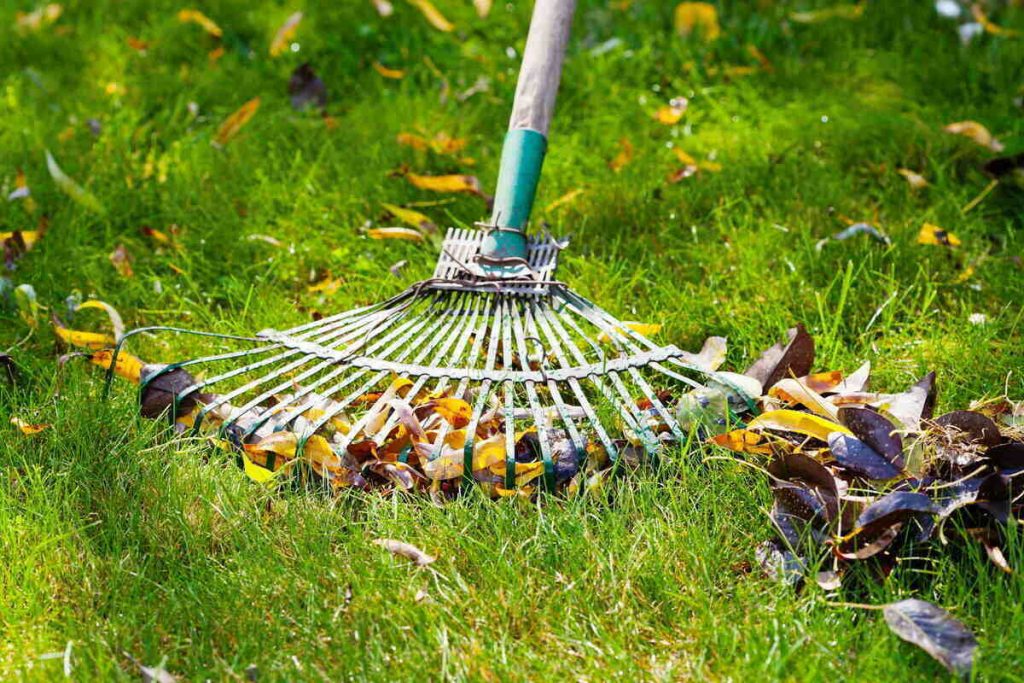
Although the fall foliage can be a picturesque sight, you should never leave the fallen, dry leaves strewn all over the place. While the thought of raking and removing leaves from your yard may make you cringe, it’s a crucial step in maintaining a healthy lawn.
The following reasons will make you pick up your rake from the shed as soon as possible:
- While leaves are not always detrimental to your grass and can even act as a natural fertilizer that enhances growth, large piles left to decompose can develop fungal growth that could cause health issues.
- These leaves can block sunlight and trap moisture, creating the perfect breeding ground for lawn diseases that can damage grasses.
- Leaves left on the ground also can reduce the oxygen absorption of your grass and plants.
- They can provide a cozy habitat for pests, such as mice and other rodents, that can cause further harm to your lawn.
- Want free mulch? You can use your lawn mower’s mulching attachment to chop the fallen leaves into finer pieces and distribute the shredded leaves evenly across your lawn.
- Removing dead branches, debris, or other clutter that may have accumulated over the summer months not only improves the appearance of your lawn but also reduces the risk of damage caused by fallen branches or other hazards.
Fall yard cleanup is an opportunity to inspect your lawn for any signs of damage or disease. By clearing away debris and examining your lawn closely, you can catch any potential issues before they become severe.
2. Test the Soil
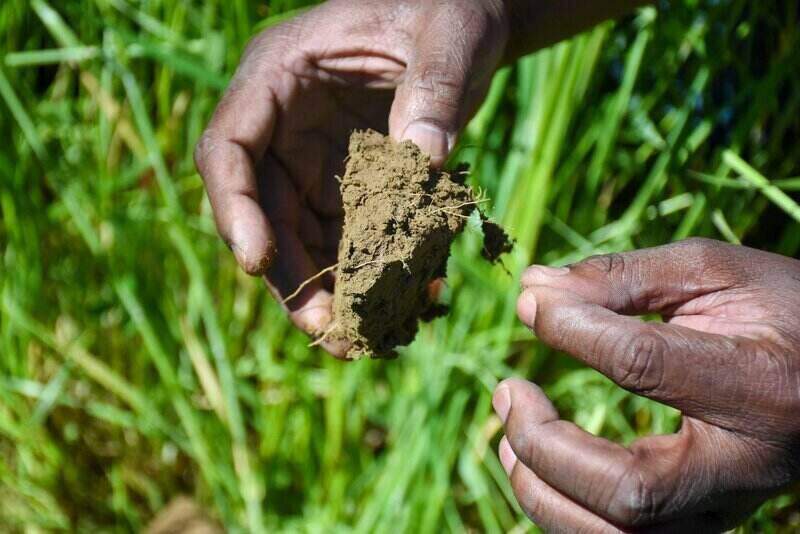
South Carolina’s unique climate and soil composition require a tailored approach to lawn care. That’s why soil testing is an essential part of maintaining a healthy lawn – especially in the fall. It’s the perfect time for soil testing because it provides an opportunity to correct any imbalances before winter dormancy.
Testing your soil can reveal nutrient deficiencies, such as a lack of nitrogen, phosphorus, or potassium, that could be hindering your grass’s growth. Additionally, it can determine the soil’s pH level, which is a measure of acidity or alkalinity. If your soil’s pH is too low or too high, it can impact the soil’s ability to absorb nutrients, causing issues for your lawn.
Here’s the ideal pH range for the most common grass types in South Carolina:
| Grass Type | Ideal pH Range |
| Bermudagrass | 6.0 – 6.5 |
| Carpetgrass | 5.0 – 6.0 |
| Centipedegrass | 5.0 – 6.0 |
| St. Augustinegrass | 6.0 – 7.5 |
| Tall fescue | 5.5 – 7.5 |
| Zoysiagrass | 6.0 – 6.5 |
Homeowners in South Carolina can take advantage of Clemson University’s affordable soil testing services to analyze their soil composition and determine the necessary amendments for optimal lawn nourishment. The cost for soil analysis is budget-friendly, with prices ranging from $10 or less per sample.
3. Aerate Your Lawn
Soil can become compacted over time due to foot traffic, lawn equipment, and other factors. Compacted soil makes it difficult for grass roots to grow, leading to a patchy and unhealthy lawn. Aeration can alleviate soil compaction, allowing for better water and nutrient absorption and promoting stronger root growth.
Fall is also the ideal time to aerate your lawn, as the weather is cooler and rainfall is more frequent. Doing so can help prepare it for the winter months. With improved water and nutrient absorption, your grass will be better equipped to handle the colder temperatures and potential droughts winter can bring.
Additionally, aeration allows for better seed-to-soil contact when overseeding, which can help fill in any thin or bare patches in your lawn.
Various types of aeration techniques can be done in South Carolina, depending on the specific needs of your lawn:
- Core aeration: One of the most common methods used, it involves removing small plugs of soil from the ground. This allows the nutrients, water, and air to penetrate the soil, promoting deeper root growth and a healthier lawn.
- Spike aeration: It involves poking holes into the soil with spikes.
- Liquid aeration: It uses a special liquid solution to break up soil compaction.
A lawn care professional can assess your lawn’s needs and recommend the best type of aeration for optimal results.
4. Cut Back on Watering
As the weather cools down in South Carolina, you must adjust your lawn care routine to reflect the changing seasons. One key adjustment to make is cutting back on watering your lawn. While it’s important to maintain adequate soil moisture for healthy grass growth, overwatering in the fall can actually do more harm than good.
First, excess water can lead to the growth of fungus and other harmful organisms that can damage your lawn. Additionally, overwatering can prevent your grass from properly preparing for winter dormancy, leaving it more vulnerable to damage from cold temperatures and frost.
While you should keep watering, gradually reduce your lawn’s watering schedule in the fall, allowing the grass to gradually adjust to the changing weather conditions. Remember, your lawn only needs 1 inch of water per week. This way, you can ensure that your lawn is well-prepared for winter and can bounce back in the spring.
5. Mow Your Lawn Short
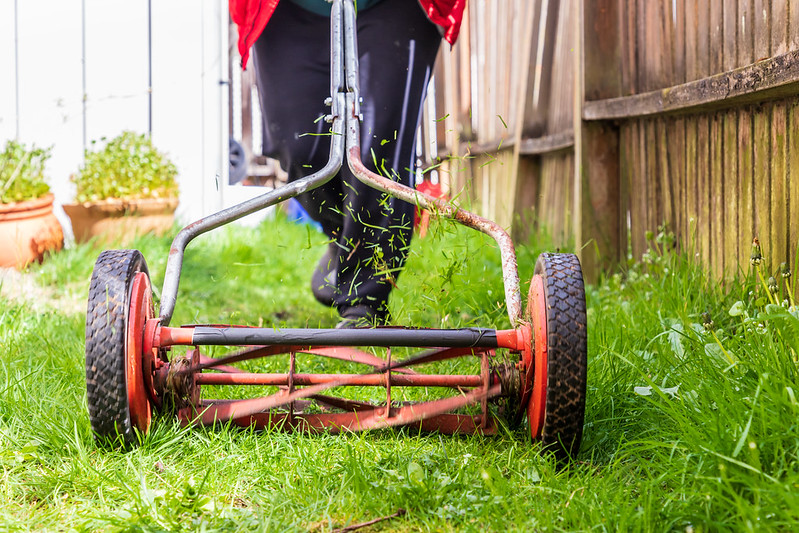
Homeowners should take the opportunity to mow their grasses short in the fall. While this may seem counterintuitive to promoting growth and health, it is actually an essential step to preparing your lawn for the winter months.
During fall, grass growth slows down and the plant’s focus shifts from above-ground growth to root development. By mowing your grass short, you encourage root growth and provide better access to nutrients and water. This helps to build a stronger, more resilient root system that can better withstand the harsh winter weather.
To properly mow your lawn in the fall, adjust your mower’s blades to a lower setting and gradually reduce the height of the grass over several mowings. It is recommended to keep the grass height around 2 inches for the final mowing of the season.
Here are the suggested mowing heights for the popular warm-season and cool-season grass types in South Carolina:
| Grass Type | Recommended Mowing Height |
| Bermudagrass | 1 – 2 inches |
| Carpetgrass | 1 – 2 inches |
| Centipedegrass | 1.5 – 2 inches |
| St. Augustinegrass | 2.5 – 4 inches |
| Tall fescue | 2 – 4 inches |
| Zoysiagrass | 1 – 2.5 inches |
6. Apply Soil Amendments
As the temperatures drop and the growing season comes to an end, you should take advantage of the fall season to apply soil amendments to your lawn. Soil amendments are essential in promoting healthy lawn growth, as they improve the soil structure, fertility, and overall health.
Adding soil amendments, such as compost, lime, and organic matter, in the fall will give the soil enough time to absorb and process the nutrients before winter sets in, helping improve the soil’s health and fertility.
Plus, applying soil amendments in the fall can help reduce soil erosion and improve water retention, which is essential during the winter months. The added nutrients from the amendments will help the lawn better withstand winter stress and prepare it for the growing season ahead.
7. Control and Prevent Weeds
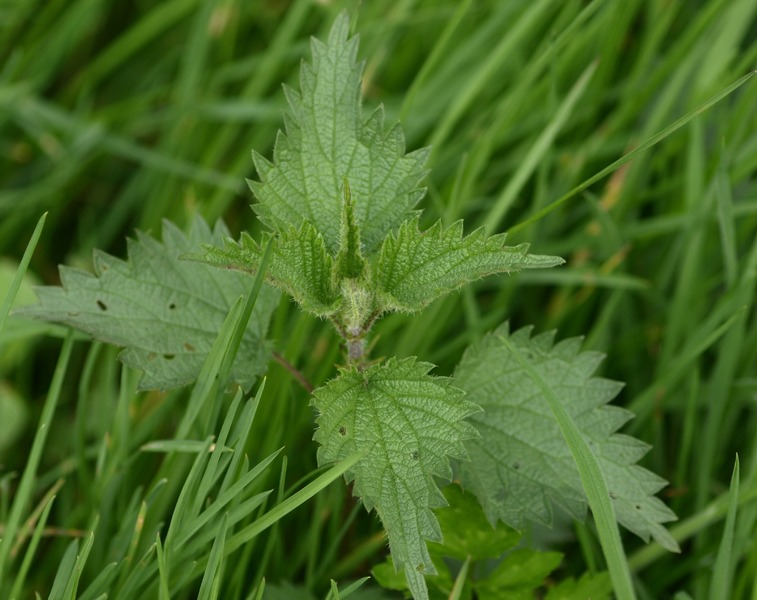
Fall is a crucial time to control and prevent weeds on your lawn. Weeds can rob your grass of the nutrients and moisture it needs to thrive, leading to a thin, patchy lawn come spring. In fact, some weed species can spread rapidly and crowd out your desirable turfgrass, creating an unsightly mess.
Prevent weeds from taking over your lawn by applying pre-emergent herbicides in the fall. These herbicides create a barrier in the soil that stops weed seeds from germinating and growing. Additionally, post-emergent herbicides can be used to kill any existing weeds in your lawn.
While you may be tempted to put off weed control until next spring, tackling the problem now will save you time, effort, and money in the long run. With the right prevention and control strategies in place, your lawn will be healthier, more beautiful, and more enjoyable come next year.
8. Treat Lawn Diseases
Pay attention to any signs of lawn diseases in your yard. Dollar spot and brown patch are common culprits that can wreak havoc on your lawn during this time of year. These diseases thrive in the warm and humid environment created by the cool fall temperatures and heavy morning dew.
Treating these diseases in the fall is crucial as they can easily survive the winter and wreak havoc on your lawn come springtime. Additionally, early treatment can prevent the diseases from spreading to healthy grass, allowing your lawn to recover and grow lush and green next season.
Dollar Spot
Dollar spot is a fungal lawn disease that emerges due to excessive dew on the grass. It is characterized by small, silver-dollar-sized yellow spots on turfgrasses like bermudagrass. Adopting proper lawn management techniques can usually prevent or treat dollar spot:
- Apply fertilizers according to the results of your soil test
- Remove thatch if necessary
- Water your lawn deeply, but do so infrequently to avoid drought stress
- Use fungicides to treat the affected areas
Brown Patch
Brown patch (large patch) is a fungal disease that occurs primarily in centipedegrass and Zoysiagrass, resulting in circular patterns of yellowing grass. To prevent and treat brown patch, follow these steps:
- Avoiding excessive nitrogen application
- Limiting watering to appropriate levels
- Eliminating excess thatch
- Aerating your lawn if your soil lacks proper drainage
9. Apply Fertilizer
One of the most important lawn tasks to prioritize in the fall is fertilization. Applying lawn fertilizer during this time can provide your lawn with the essential nutrients needed to recover from the stress of summer, survive the harsh winter, and thrive in the spring.
The cooler temperatures in the fall create an ideal environment for grass to absorb nutrients and develop strong roots. Your grass roots will continue to grow during this time and will retain the provided nutrients until spring. So you should fertilize at least once before the temperature drops – between late September and early November.
Consider using a pelletized fertilizer with suitable ratios of deficient nutrients in your soil. Many lawn care professionals offer customized fertilizer plans based on soil tests and specific lawn needs. Alternatively, opt for an organic and all-natural fertilizer, such as aged compost or grass clippings.
The ratio of N-P-K (nitrogen, phosphorus, and potassium) will vary depending on the needs of your lawn. For example, a fertilizer with a higher nitrogen content may be recommended for lawns that need to promote growth, while a fertilizer with a higher phosphorus content may be recommended for lawns that need to improve root development.
By taking a soil test and analyzing the nutrient levels in your soil, you can determine the ideal N-P-K ratio for your lawn and choose a fertilizer that meets those specific needs.
10. Winterize Cold-Sensitive Plants
Fall is also the time to start thinking about winterizing the cold-sensitive plants on your lawn to ensure they survive the harsh winter months. Do the following to ensure they make it through the winter and come back strong in the spring:
- Start by cutting back any dead or damaged foliage and branches. This will not only improve the plant’s appearance but also help it conserve energy for the winter.
- Next, consider wrapping the plants in burlap or other protective material to insulate them from the cold.
- You also may want to cover the plants with a frost cloth if temperatures are expected to drop significantly.
- Also, pay attention to the soil around your cold-sensitive plants. Apply a layer of mulch to help insulate the roots and keep them from freezing.
- Give your plants a slow-release fertilizer, so they have the nutrients they need to survive the winter.
11. Act Early to Prevent Lawn Pests
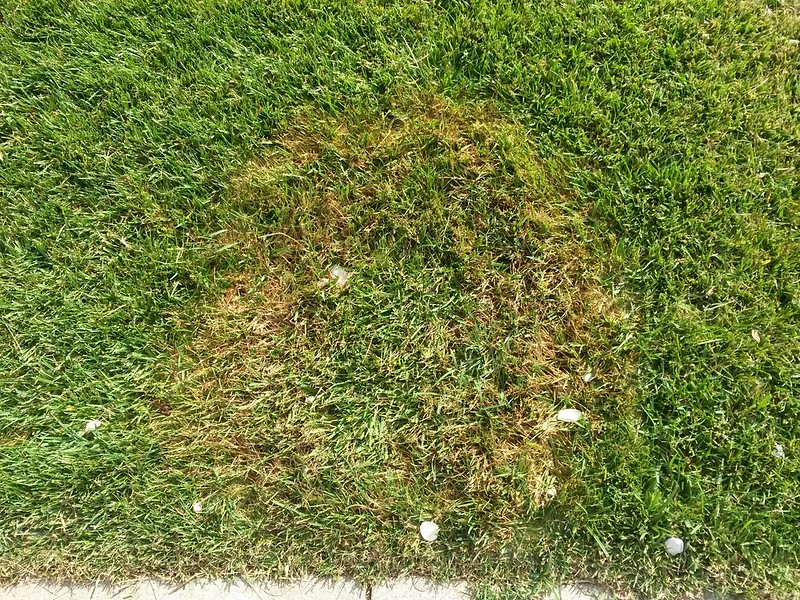
Lawn pests, like chinch bugs and grubs, can still cause damage during the fall months. And without proper prevention, they can continue to wreak havoc on your lawn throughout winter and into spring.
Acting early in the fall to prevent lawn pests is crucial because once an infestation has taken hold, it can be difficult to control. In addition to causing unsightly damage to your lawn, pests also can attract other unwanted visitors, such as birds and rodents. These pests can further damage your lawn and may even spread disease.
To prevent lawn pests in the fall, regularly inspect your lawn for signs of damage, such as yellow or brown patches. You should consider applying a preventive insecticide to your lawn to kill off any larvae or eggs that may be present.
12. Overseed Thinning Areas
Overseeding your lawn in the fall is a great way to improve the density and appearance of your grass. For South Carolina, you can use cool-season grasses, like tall fescue, for overseeding. These grasses will thrive in the cooler temperatures of fall and spring while your warm-season grasses are dormant.
The best time to overseed your South Carolina lawn is between mid-September and mid-October. During this time, the soil temperature is still warm enough to allow for good seed germination, while the cooler air temperature helps create ideal conditions for grass growth. Additionally, overseeding in the fall allows new grass to establish roots before winter arrives, giving it a head start for growth in the spring.
Before overseeding, you must prepare the lawn properly. Mow your grass to a short height and remove debris and thatch. Aeration can be beneficial to loosen compacted soil and provide space for new seeds to germinate. After seeding, water the lawn regularly to keep the soil moist (not muddy or saturated) until the fresh grass has become established.
FAQ About Fall Lawn Care in South Carolina
Yes, there are several ways to tell if your grass is dormant rather than dead. One sign is that the blades of dormant grass will look thin and brittle and still have a greenish hue (albeit a faded one), while dead grass will be brown or gray.
Another way to distinguish dormant grass is by looking at the roots. If the roots are still firm and white, your grass is likely dormant. You also can try watering the grass and giving it some time to see if it begins to regrow. If it does, it was likely just dormant.
For warm-season grasses like bermudagrass, centipedegrass, and Zoysiagrass, the growing season usually ends in late September or early October. As such, it’s recommended to stop mowing once the grass stops growing or slows down significantly. Otherwise, cutting too short during this time can damage the roots and make it harder for the grass to bounce back the following spring.
For cool-season grasses like tall fescue, the growing season usually extends throughout the fall and winter months, with the grass continuing to grow until the temperatures drop below 50 degrees Fahrenheit. So you may have to stop mowing your cool-season grass as early as November to as late as January.
A fertilizer that’s high in potassium and nitrogen but low in phosphorus is recommended for fall application. This is because potassium helps improve the cold tolerance and disease resistance of the grass, while nitrogen promotes root growth and overall health.
Invest in Your Lawn and Get it Ready for Spring
As the leaves begin to fall and temperatures start to drop in South Carolina, it’s time to start thinking about your lawn care routine. The cooler temperatures and relaxed growth patterns create the perfect conditions for certain lawn care practices that can help ensure your lawn is well-prepared for the harsh winter months and primed for a lush green-up in the spring.
Before putting up Halloween decorations on your lawn, reach out to a lawn care pro to give your lawn the best care possible. Regardless if you live in Columbia, Rock Hill, or near the beach in Charleston, Mount Pleasant, or Myrtle Beach, these professionals can help maintain your lawn so you don’t have to.